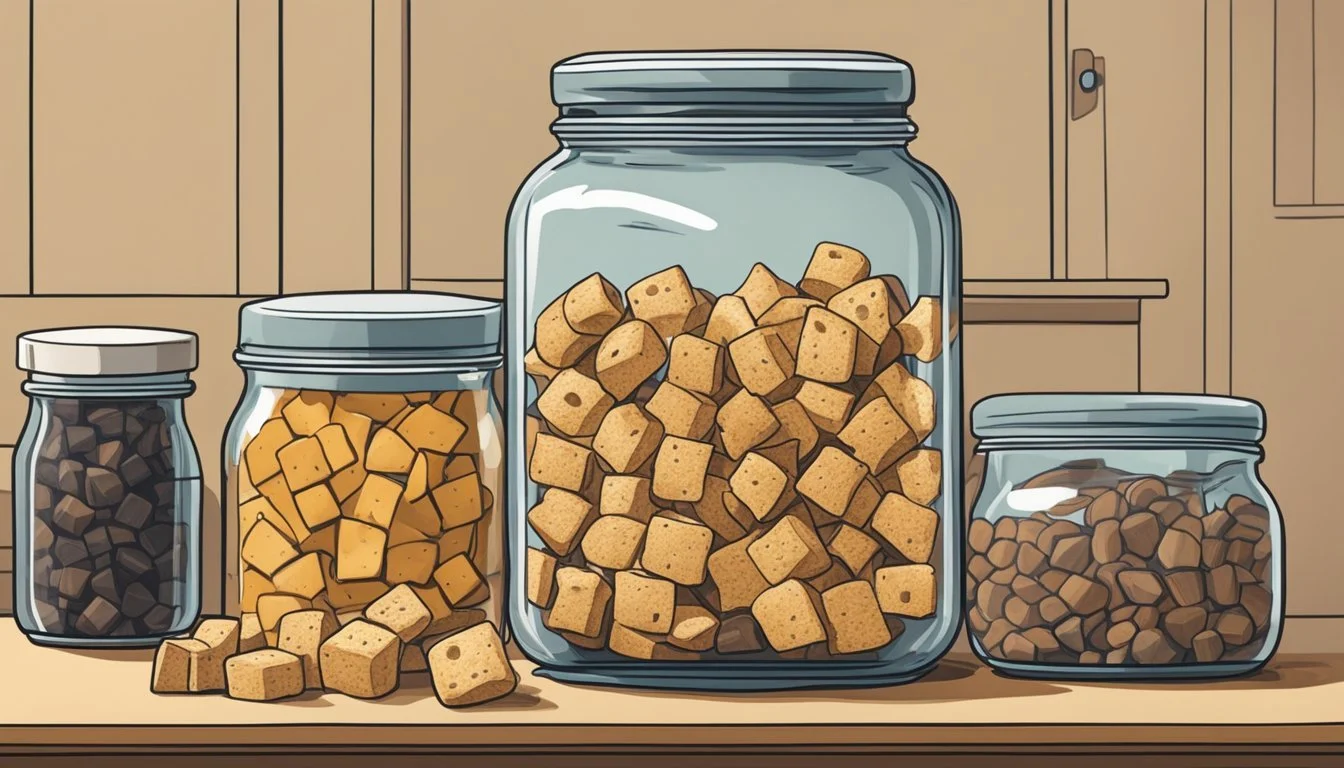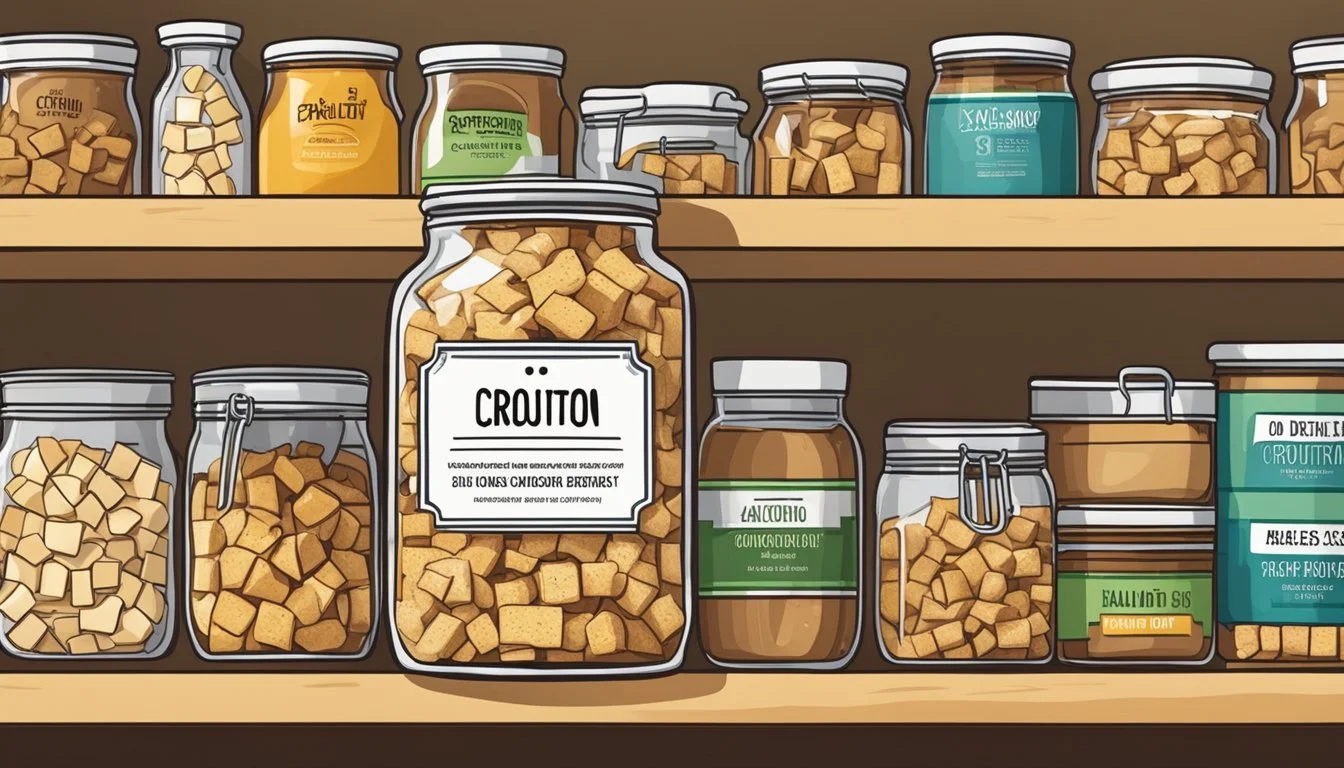How Long Do Croutons Last?
Shelf Life and Storage Tips
Croutons (how long do croutons last?), the small cubes of toasted or fried bread commonly used to add a crunchy texture to salads, soups, and other dishes, have a varying shelf life depending on their preparation and storage methods. Typically, homemade croutons remain fresh for up to two weeks if kept in an airtight container at room temperature. Their longevity hinges on how dry and crispy they are initially; the drier the croutons, the longer they can be preserved without losing their quality.
Commercially packaged croutons, due to their preservatives and packaging, can last significantly longer. They can often be stored at room temperature for several months without any noticeable degradation in texture or flavor. It's also worth noting that both homemade and store-bought croutons can be frozen to extend their shelf life, with homemade croutons maintaining good quality for up to six weeks in the freezer.
The key to maximizing the shelf life of croutons lies in proper storage. Ensuring they are kept in an airtight container and away from moisture is vital to avoid softening. Moreover, fresh seasonings, such as cheese, can shorten the lifespan of homemade croutons, so storage practices may need to be adjusted accordingly.
Understanding Croutons
In exploring the world of croutons, one discovers that these small, seasoned pieces of bread play an influential role in both the texture and flavor profiles of various dishes.
Defining Croutons
Croutons are essentially small cubes or bits of bread that have been toasted or fried to a golden brown to achieve a crispy and crunchy texture. They often incorporate seasonings like garlic, salt, herbs, and cheese, like parmesan, to enhance their taste. The bread used is typically stale or leftover, ensuring minimal waste, and the croutons can be made either in the oven with applied heat or on the stovetop using oil or butter. Olive oil is a common choice for achieving a rich flavor.
Common Uses for Croutons
Croutons are most famously served as a topping on salads, especially Caesar salads, adding a satisfying crunch to each bite. They are also a popular addition to soups, providing a contrasting texture to the liquid. Beyond these common uses, croutons serve to enhance flavors and add body to meatloaf, as a crust for fish, or mixed into stews and pasta dishes. Homemade croutons can be tailored with a variety of dried herbs (how long do dried herbs last?), flavors, and seasonings to complement specific dishes. Additionally, croutons aren't restricted to savory dishes; they can be a crunchy snack on their own or crushed to make breadcrumbs for a sandwich or pasta dish topping.
In summary, whether one opts for a store-bought pack or ventures into making homemade croutons, these crunchy cubes serve as an essential culinary component across a spectrum of recipes, enhancing the overall eating experience with texture and bursts of flavor.
Storage Fundamentals
When it comes to ensuring the longevity of croutons, selecting the correct storage method is critical. This involves using appropriate containers and storing them in ideal locations to minimize exposure to moisture and maintain crispness.
Appropriate Containers
Storing croutons properly means keeping them in an airtight container. This type of container is essential in preventing moisture and humidity from softening the croutons. For homemade croutons, it is best to transfer them to a storage bag or container with minimal air to avoid condensation. Store-bought croutons often come with preservatives which help maintain their shelf life, but they too benefit from being stored in an airtight container after opening.
Airtight containers: Keep croutons crisp and extend their shelf life.
Storage bags: If using bags, squeeze out the air to protect against humidity.
Storage Locations
The ideal storage location for croutons is a pantry, as it typically provides a dark, cool, and dry environment. Room temperature is preferable for maintaining the quality of the croutons without risking the dampness that can occur in a refrigerator.
Pantry: Best for room temperature storage.
Freezer: Optional for extending shelf life up to 6 weeks, though this may affect texture.
Refrigerator: Not recommended as it can introduce moisture and cause sogginess.
Croutons last longer when they are kept away from heat and light, which can lead to the degradation of their quality. Proper storage can make homemade croutons last up to two weeks at room temperature and bought croutons even longer, depending on the use of preservatives and adherence to storage guidelines.
Shelf Life of Croutons
The longevity of croutons largely depends on their method of preparation and storage conditions. Croutons can become stale or moldy past their optimal period, and understanding their shelf life is crucial to ensure freshness, whether tossed in soups or sprinkled over salads.
Homemade Croutons Shelf Life
Homemade croutons, typically made from day-old bread, last about two weeks if they are stored properly in an airtight container away from moisture and heat. For maximum freshness and to prevent the croutons from going stale, some individuals choose to store them in the freezer, where they can retain quality for up to six months. It is important to note that adding fresh seasonings or ingredients such as cheese can reduce their shelf life.
Store-Bought Croutons Shelf Life
Different from their homemade counterpart, store-bought croutons often come with a 'best by' date, which should be adhered to for peak quality. On average, a sealed package of croutons from the grocery store can maintain its freshness for several months beyond this date if unopened. Once opened, if kept in an airtight container, they can generally last for a minimum of four to six weeks before they risk going bad; however, always check for signs of staleness or mold before consumption.
Signs of Spoilage
Croutons are recognized for their crunchy texture and savory taste. However, they are susceptible to spoilage over time, just like other food products. There are distinctive signs to look for when assessing whether croutons have gone bad.
Firstly, the taste of croutons is a clear indicator of freshness. Fresh croutons should have a toasty and pleasant flavor. If they taste stale or off, this is a sign they may no longer be suitable for consumption.
Inspect croutons for mold growth, which commonly appears as fuzzy green or white spots. Mold indicates significant spoilage, and croutons should be discarded immediately. Consuming moldy croutons can lead to health risks, as they may contain harmful bacteria.
The aroma of croutons can also show signs of spoilage; a rancid smell suggests that the fats in the croutons have begun to spoil. This is a telltale sign they should not be eaten.
Lastly, croutons should retain their dry, crispy nature. If they feel soggy or have lost their crispiness, it suggests moisture has affected the product, making it prone to spoilage and potentially unsafe.
Signs of Spoilage Description Taste Stale or unpleasant taste indicates they are past their prime. Mold Visible mold growth is a sure sign of spoilage. Smell A rancid or off odor indicates they have gone bad. Texture Soggy or no longer crispy croutons suggest spoilage.
In summary, spoiling is indicated by changes in taste, the presence of mold, a rancid smell, and a change from crispy to soggy texture. When any of these signs are noticed, the croutons should not be consumed.
Preservation Techniques
Proper storage is crucial to extending the shelf life of croutons, whether they are homemade or purchased. To maintain their crispness and prevent them from becoming stale or moldy, certain preservation techniques should be applied.
Extending Croutons' Freshness
For homemade croutons, it is essential that they are dry and crispy before storage to maximize their freshness. Here is how one can extend their lifespan:
Airtight Container: Croutons should be stored in an airtight container to protect them from moisture, which can make them soggy. Ensure the croutons have cooled completely before placing them in the container to avoid condensation.
Cupboard Storage: The ideal location for your airtight container of croutons is in a dark, cool cupboard. This helps prevent exposure to heat which can spoil the croutons prematurely.
Freezer Option: To further prolong their shelf life, croutons can be frozen. Place them in a freezer-safe, airtight container or bag. Label with the date, as frozen croutons can last for several weeks.
Defrosting: When ready to use, remove the croutons from the freezer and allow them to defrost at room temperature. They can then be crisped up in the oven if necessary.
Following these steps, one can preserve the nutrition and taste of croutons, ensuring they remain a delightful addition to soups and salads. Homemade croutons typically last up to two weeks at room temperature and can last even longer when frozen, whereas store-bought variants might have a longer shelf life due to preservatives. Always check croutons before use to ensure they have not gone stale or moldy.
Utilization of Stale or Leftover Croutons
When croutons reach the point of staleness, or there are leftovers unwilling to go to waste, one can repurpose them into flavorful additions for various dishes, enhancing both texture and taste.
Recipes and Ideas
Stale croutons can be reinvented through incorporation into a range of recipes. They bring a desirable texture and a flavor boost to many dishes beyond their traditional role in salads. The key is to think of stale croutons as a versatile ingredient rather than just leftovers.
For Soups and Stews:
Crouton Topping: Add to soups or stews to enhance texture. Break stale croutons into smaller crumbs if desired.
Thickener: Crumble into fine breadcrumbs and use to thicken stews or soup bases.
In Salads:
Enhanced Salad Topping: Toss with melted butter, herbs, pepper, and parmesan cheese and rebake to refresh before adding to salads.
Meat and Fish Dishes:
Meatloaf or Fish Filler: Use stale croutons as a substitute for breadcrumbs in meatloaf or as a binder in fish cakes.
Creating New Croutons:
Cube and coat with seasonings such as garlic, herbs, and leftover melted butter to create a moreish topping.
Toast in the oven until they are crispy again to revive some of their original qualities.
Utilitarian Uses:
Cleaning Agent: Can be used to clean greasy pans when crushed into crumbs due to their abrasive texture. Ensure to rinse thoroughly after.
Remember, stale or leftover croutons still hold value for culinary uses, offering not just sustenance but also an opportunity to get creative in the kitchen.






